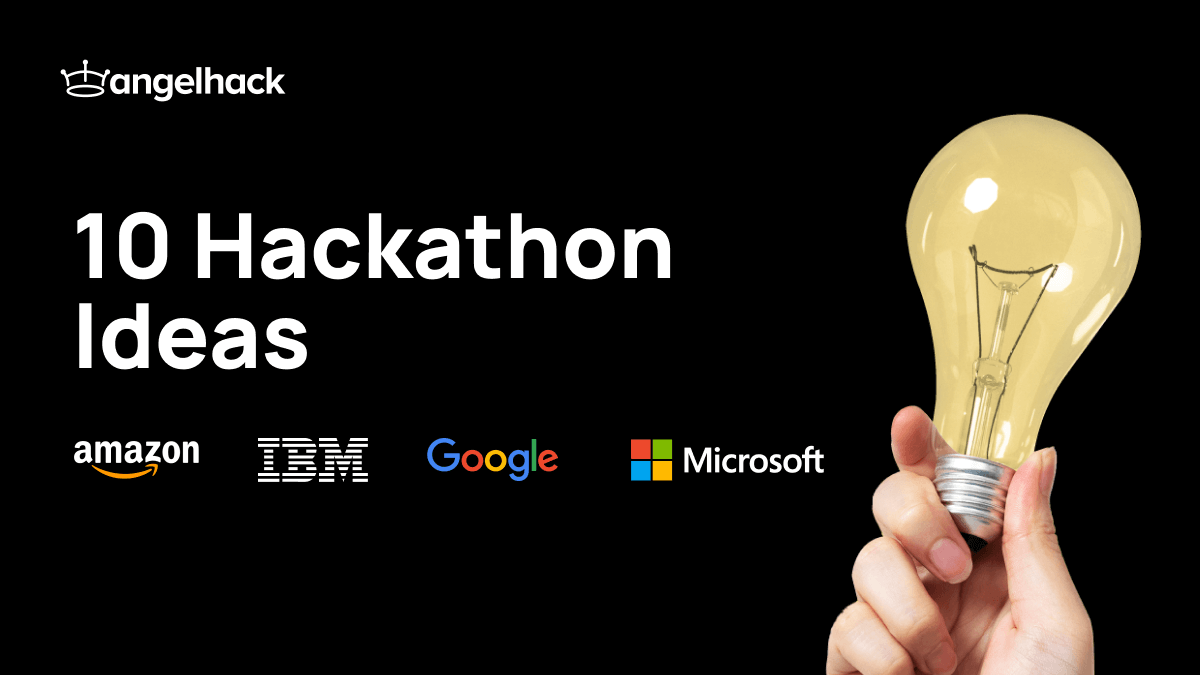Innovation is one of the major driving forces behind business and technological development. The fostering innovation process breeds invention and discovery, and we may also regard it as the foundation of technology.
McKinsey’s most recent innovation report states that companies that actively promote a culture of innovation are 3.5 times more likely to outperform their peers. Having realized the importance of foster innovation, many managers and CEOs are already implementing innovative ideas in the workplace.
But having ideas is not enough; you need innovation to move rapidly to make something of these creative brainwaves. By following these five principles below, you’ll turbocharge your innovative processes and improve your workflow endlessly.
#1 Prioritize and Curate a Particular Problem
Identifying problems helps to clarify the need for innovation. The desire to solve the problem leads to critical thinking, which is a requirement for innovation. This process is also applicable to innovation acceleration.
Properly defining problems gives direction on how to foster innovation. However, the best way to speed up innovation is to focus on a specific problem. It involves filtering through hundreds of issues identified, picking one, and curating it. During the curation process, you’ll break the problem down into parts. From there, you can form a hypothesis and innovative solutions to tackle the problem.
Good problem curation results in an adequate understanding of the issue and how to solve it. Not only that, it shortens the time you’ll need to implement the innovation in the workplace and complete QA processes. But, it may not significantly influence the time it’ll take for results to become evident.
How your company can apply the principle to encourage innovation in the workplace:
- Market research: By systematically gathering and analyzing data about consumers, competitors, and market trends, companies can identify patterns, evaluate market needs and challenges, as well as benchmark against their competitors.
- Data analysis: Data yields emerging patterns, trends, and anomalies – all the useful sources to define particular efficiencies or bottlenecks in the operational process. Companies can then strategically turn these insights into actionable strategies to optimize their performance.
- Customer feedback: Customer feedback provides direct insight into the issues faced by end-users, making it a critical component in the problem-curation process. There are various methods to gather feedback such as surveys, interviews, and social media monitoring.
Success story: Airbnb as the hotel industry disruptor

Airbnb, the global leader in the home-sharing market with over 7 million listings in more than 220 countries, identified the lack of personalized and unique travel experiences in the hotel industry as a key problem. Through market research, they found a growing demand for accommodations that reflect local culture, instead of standardized hotel rooms. Airbnb then introduced innovations like “Experiences” and “Adventures” offering authentic and memorable stays provided by local hosts, which were enthusiastically welcomed by travelers worldwide.
#2 Foster innovation with a culture of creativity and experimentation
Rigid policies leave little room for new ideas and smother the voices and imaginations of their workers. If the company stifles employee creativity and hesitates to take risks, the innovative process will obviously be slowed down. To succeed and accelerate innovation, organizations need to embrace creative thinking and adventurous experimentation.
Creating such a culture involves initiatives that expand employees’ usual thought processes to uncover new, ambitious ideas. Furthermore, companies need to foster an environment where employees feel empowered to propose these ideas, as well as provide the needed resources to speed up development. Keep in mind that oftentimes, foster innovation requires more focus on the potential results rather than the risks associated with experimentation.
By fostering a culture of creativity and experimentation, organizations can break down barriers to innovation, harness the full potential of their employees, and continually discover new ways to achieve their goals more efficiently.
How your company can apply the principle to foster innovation:
- Creativity Workshops: Taking many forms, from brainstorming sessions to design thinking exercises and group projects, creative workshops challenge employees to think outside the box, approach problems from new angles, and develop ground-breaking ideas. Not only do they enhance individual creativity, but also team collaboration, leading to a more dynamic workplace culture.
- Internal Competitions: Similar to workshops, competitions can be anything: hackathons, pitch challenges, or idea contests! These events act as a platform for employees to put critical thinking and creativity into use to improve the company. The competitive element also adds excitement and urgency, resulting in a surge of employee participation.
- Idea Incubator Program: A structured approach for nurturing and developing innovative ideas. This program can offer resources such as mentorship, funding, and dedicated time for employees to work on their chosen projects. By supporting the entire innovation lifecycle—from ideation to implementation—companies can ensure that promising ideas are thoroughly explored and refined.
Success story: Microsoft’s annual hackathon

Even tech giants such as Microsoft, Google, Facebook and IBM hold annual and impromptu hackathons, which is a testament to how competition can really be the driving force of innovation. Take Microsoft for example. As one of the largest private hackathons in the world, the annual hackathon brings together thousands of employees from different departments and disciplines. The innovative solutions coming out of this hackathon series have a profound impact on society, such as Seeing AI and Hearing AI apps for people with disabilities.
AngelHack had the honor of partnering up for one of Microsoft’s annual hackathons with the theme of AI.
#3 Secure Funding Sources to promote innovation in the workplace
Your innovation will only go as far as your funding does. You need proper financial backing to accelerate your innovative process. In other words, you need financial stakeholders who will provide the funds and resources you require to accelerate the innovation.
One of the main issues surrounding funding sources is that you can’t approach just anybody to provide the funds for furthering the project. Thankfully, this is a problem you can solve with stakeholder mapping. Stakeholder mapping involves identifying personnel with the financial capacity and interest in being part of your project. It’s a process of finding the people with the necessary financial resources to accelerate the implementation of innovation, such as beneficiaries, buyers, and investors.
Nonetheless, it’s all easier said than done when it comes to getting the stakeholders on board. That’s why you need to nail the value proposition. Nailing the value proposition will be much easier when you structure interviews based on a set of hypotheses. You can discuss the problems you’re seeking to solve and the solutions you’re exploring. Doing this will increase the effectiveness of the conversation, and you can convince the stakeholders faster.
How your company can apply the principle:
- Innovation budget: Dedicate a certain percentage of your operational budget to fund new ideas, product development, and process improvement within the company. This ensures available resources for potential innovations that gain you the competitive edge, while accelerate the adoption of new technologies.
- Industry events: These are great opportunities to showcase the innovation directly to a concentrated audience of potential investors, partners, and customers, allowing them to gain hands-on experience and give immediate feedback.
- Venture capitals: Venture capital firms are crucial for securing funding as they specialize in investing in high-potential products and startups. Not only do they offer financial support but also strategic guidance, mentorship, and industry connections for these innovations to fully prosper.
- Strategic partnerships: Through collaboration with established companies and industry players, innovations can utilize the existing resources of these entities to access new markets and advance even further in terms of technology.
Success story: Dropbox and the leap to success at TechCrunch

Dropbox, the leading cloud storage service, gained widespread attention after its live demonstration at TechCrunch Disrupt, one of the most influential tech conferences. Highlighting Dropbox’s simplicity and efficiency, the demo captivated both the audience and potential investors, and later became the pivotal moment that helped Dropbox secure initial funding from prominent venture capital firms, including Sequoia Capital and Accel Partners
Interested in tech events?
💡 Learn how to create an impactful one with our case study →
#4 Work With a Well-Rounded Team
Build a team of people with diverse skills who can fill certain roles as you go about the innovation. To enable your innovation process to move quickly, you need people in the following capacities:
- Managers: They oversee the entire innovation process, set strategic goals, and coordinate cross-functional teams to ensure successful deliveries.
- R&D specialists: They conduct extensive research of the market and the technology landscape to identify opportunities and ideate feasible solutions accordingly.
- Product designers: They design user experiences and interfaces to make sure that the final product is visually appealing and easy to use.
- Software engineers: They build and maintain the technical infrastructure of said solution, ensuring high functionality and consistent performance.
- Product marketers: They promote the product by identifying target audiences, then developing and executing the go-to-market strategies through various marketing channels.
How your company can apply the principle:
- Cross-functional teams: Adding to the traditional departments in a company, these cross-functional teams ensure that all aspects of innovation are covered, enhancing the productivity and quality of this special area.
- Diversity hiring policy: Recruiting individuals from different backgrounds, skills and experiences fosters a creative and well-rounded approach to problem-solving, leading to more successful innovations.
- Collaboration projects: Cross-functional projects, sprints or hackathons are great ways to encourage teamwork and idea-sharing within the company, ensuring alignment towards common goals and nurturing a culture of continuous foster innovation.
🔎 Explore how can hackathons accelerate corporate innovation →
Success story: Apple’s product development process

Apple is renowned for its cross-functional collaboration, seamlessly integrating design, engineering, marketing, and operations into its product development process. This unified approach ensures that every product reflects a cohesive vision and high standards of quality. Moreover, the Apple culture also encourages open communication, iterative development, and a relentless focus on the end-user. The result? iPhone, to this day, remains the most popular smartphone with advanced technology, seamless experience, design excellence, and an interconnected ecosystem.
#5 Always Be Ready to Adapt
Remember 2023, when we were still patiently waiting to be redirected to a customer service agent? The prediction is that by 2025, 95% of customer interactions will be powered by AI-driven technologies. That’s how fast technology evolves.
Every day, discoveries come up that are capable of changing the way we see and do things. In other words, innovations sometimes disrupt existing processes and technologies, in both good and bad ways. It’s important to always anticipate and prepare for such disruptive innovations.
Adapting to these changes may not necessarily accelerate your innovation. However, it’ll be enough to prevent the deceleration of your innovation implementation, which is absolutely critical if you want to meet your innovation goals before the deadline.
How you can apply it to your workplace:
- Trend analysis: By actively monitoring and analyzing market trends and technology advancements, companies can notice the earliest signs of disruptive innovation and adapt timely. This can be achieved through a combination of industry reports, analytics platforms, innovation networks and events.
- Scenario planning: A strategic planning method often employed by companies to explore and prepare for the future. The process typically includes identifying key drivers of change, developing possible scenarios, evaluating potential impact and drafting an action plan for each scenario.
- Continuous training: It is essential that all employees are best prepared with the latest technologies and industry best practices in order to swiftly adapt to changes. These learning opportunities not only enhance their capabilities but also foster a culture of innovation and lifelong learning within the company.
Success story: The transformation of Netflix

Do you know that Netflix started out in 1997 as a video rental service? Picking up on the tremendous potential of streaming early on, Netflix shifted from physical rentals to on-demand streaming subscription in 2007, following up with a strategic transition to original content production to make sure the service stands out from other competitors. As of 2024, the platform remains the leader in the streaming industry with 24% market share and 270+ million users worldwide. On the other hand, Blockbuster, once the dominant force in video rentals in the 1990s, eventually declared bankruptcy as a failure to adapt to disruptive innovation.
Final words
Innovation may sound like an abstract concept, but we hope that these five principles are able to give you clear guidance on how to successfully nurture, manage and adapt to it.
📍 7 Dangerous Mistakes You Might Be Making in The Innovation Process
Lies at the heart of innovations are strategists and developers – the people who create, sustain and advance the technology behind them. Therefore, establishing a strong relationship with developers is vital for any company aiming to stay competitive in this fast-paced technology landscape. As the world leader in developer relations, AngelHack can help your company devise a winning innovation strategy by tapping into the global developers & innovators pool – simply 💌 contact us for a free consultation session!



